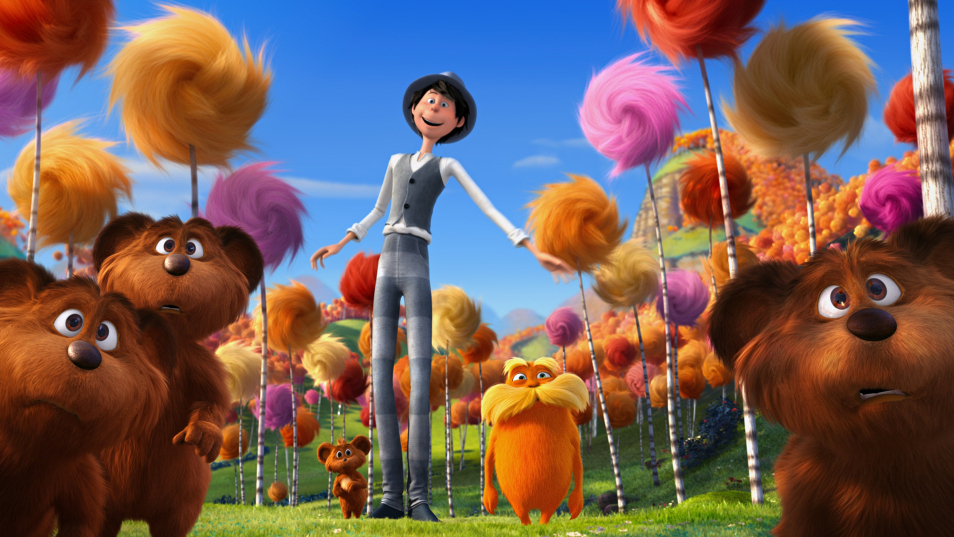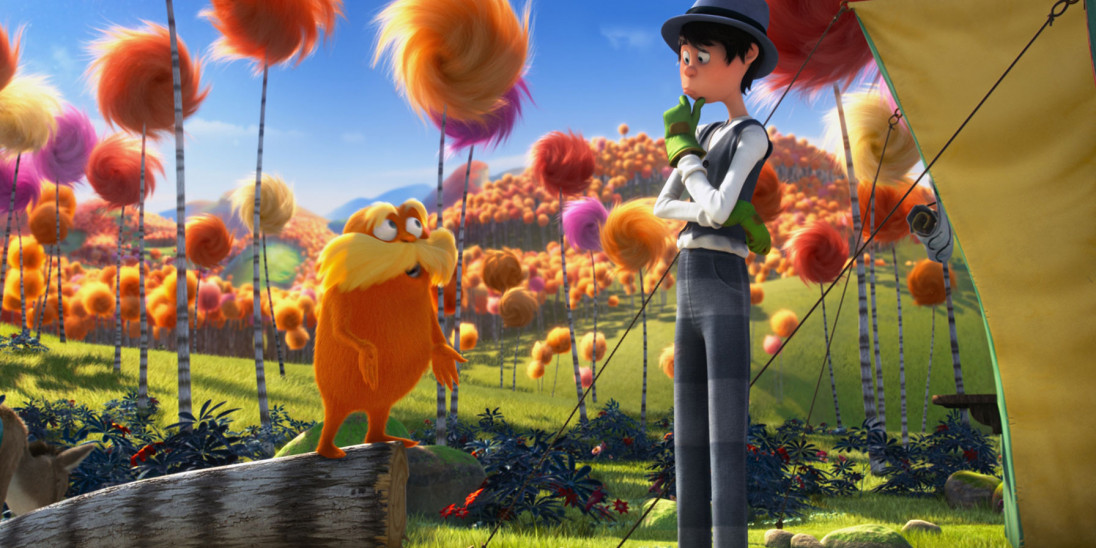Ted, a young boy, lives in a city of the future where grass and trees are made of plastic, and fresh air is sold in bottles. To win the heart of the girl he likes, he decides to get her a real tree. This quest leads him beyond the city limits, where he must find the reclusive Once-ler and listen to his long tale about a colorful forest, charming bears, and the furry guardian of the forest, the Lorax.

A Film for the Younger Crowd
Amidst numerous high-quality and witty animated films that aren’t always aimed at children, “The Lorax” stands out by specifically targeting a younger audience. The simple plot, where good triumphs over evil (in this case, greed), and the easily understandable idea that “cutting down every tree can lead to disaster” are presented with accessible humor. This serves as the foundation for a visually stunning film with endearingly fluffy characters.
The Beauty of 3D Space
What’s most remarkable about “The Lorax” is its spatial design, made even more impressive by its 3D presentation. The colorful woolen trees, clumsy bear-like creatures, and singing fish contrast sharply with the bleak landscape of twisted metal scraps, devoid of life. This contrast effectively conveys the moral to children while adding visual appeal. Even the graphically simple and conventionally drawn world of humans is juxtaposed with the natural world, led by the furry monster Lorax, voiced by DeVito, who was likely chosen for his physical resemblance and established persona, and who voiced the character in four languages (including Russian!).

Dr. Seuss’s World Brought to Life
It’s a well-established tradition that the books of children’s author Dr. Seuss provide ample room for artistic imagination. In 2000, his book “How the Grinch Stole Christmas!” was adapted into a film, primarily appealing due to its fantastical city sets. It seems that the works themselves lend themselves to the creation of something childlike, colorful, and kind: funny names and characters like the Lorax, Thneedville, and Whos, and memorable furry creatures. It’s all as harmless as the bear cubs in “The Lorax,” but irresistibly cute. The only slightly perplexing aspect is when, at the beginning and end of this vibrant, simple tale, the animated characters suddenly start singing something along the lines of “Plant a seed, and everything will be alright.”
A Clear Message
Even without the singing, the film makes it clear that nature must be protected, or the fluffy Lorax will become very upset and indignantly shout something in his broken Russian.